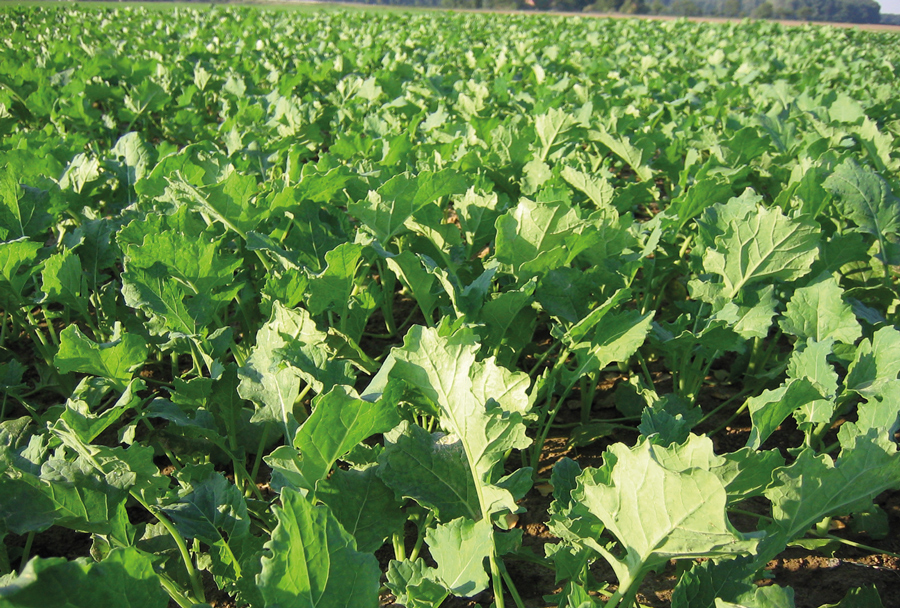Maximising value from spring oilseed rape
10th March 2020
With the area of UK-grown spring oilseed rape potentially as high as 60,000ha this year compared with around 10,000ha usually, what are the key management areas new growers should focus on?
While the 4–5t/ha yields achieved by spring oilseed rape in some countries might be difficult to repeat in UK conditions, 3t/ha should be a realistic target for many growers this year, says DSV UK’s Sarah Hawthorne.
“Spring sown oilseed rape is really only a niche crop in the UK but it is widely grown throughout the rest of the world so there is considerable knowledge available on how to get the most out of it.
“In fact, at a global level, around two thirds of all oilseed rape produced is spring sown and it’s becoming increasingly popular as you head towards Eastern Europe. It is estimated 1.4million ha is grown in Russia annually.”
Much of its increasing popularity is down to development of varieties that deliver consistently high yields in the shorter growing period available, combined with greater understanding of the crop’s management, she says.
“Sowing is a critical area and should be carried out in the best conditions possible to ensure rapid and even emergence. It is always better to wait for optimum seedbed conditions rather than sowing early.
“The optimum sowing date is from mid-March to mid-April, with a firm but moist seedbed being the aim. Land that is excessively wet and cold should be cultivated before sowing to ensure that the topsoil can warm up and dry down before being drilled.
“Spring oilseed rape plants develop less branches than winter sown varieties so this must be compensated by a higher plant density. Ideally you should be aiming for between 60–80 seeds/m² but this will depend on soil conditions and sowing date.”
Nutrition
There are also differences in management when it comes to crop nutrition, Sarah Hawthorne says.
“Spring sown oilseed rape benefits more from N mobilisation in the soil because the highest demand is later in the season when soils are warmer and more active.
“An early application of 80–100kg N/ha is advised soon after sowing and this should be followed by a further 40kg N/ha at stem elongation.
“Like winter oilseed rape, the spring sown crop has a high demand for sulphur and boron. An early application of 20–30kg SO3/ha is a good idea and 300–400g B/ha are needed before flowering.
“Adequate P, K and Mg also needs to be provided to maximise yields, with uptakes likely to be in the region of 50–70kg P2O5/ha, 160kg K2O/ha and 50kg MgO/ha.”
Weed and insect control are areas where particular care is needed too, she says.
“Generally, the same herbicides used for winter oilseed rape are suitable and, for fields with high volunteer pressure or difficult-to-manage weeds, Clearfield variety Click CL would be a good option.
“Insect pests are the most difficult-to-manage problem in spring oilseed rape. Cabbage flea beetles must be monitored after sowing. Their feeding damage can look similar to cabbage stem flea beetles so you need to be careful.
“When feeding exceeds more than 25 per cent leaf area, a pyrethroid insecticide is recommended.”
As soon as buds become visible you also need to be wary of pollen beetle,” she advises.
“Pollen beetle are a bigger threat to spring sown crops than winter ones as they migrate to the spring crops after the winter crops have flowered, so you must remain vigilant and take appropriate action where needed.
“PGRs are not usually required and, generally, use of inputs is lower than with winter oilseed rape crops so this helps offset the lower yields you are likely to achieve.
“Furthermore, it adds another spring crop into the rotation so spring oilseed rape can be a useful tool in black-grass management where this is a problem.
“Plus, of course, there are excellent prospects for oilseed rape prices in the coming months so margins should be good.”
Breeding work continues
According to DSV spring oilseed rape breeder Inga Tetzner, gross output remains the company’s key target with considerable successes achieved in recent years.
“We’ve been breeding spring oilseed rape since the early 1970s and have been continuously adding value to the crop.
“As well as focusing on varieties that deliver high yields and oil contents, we are working on more robust plant types that are more resilient against biotic and abiotic stress.
“Click CL is our first Clearfield oilseed rape and we have just launched Menthal – the first clubroot resistant spring sown variety in Europe.”
The variety Lumen is a milestone in the company’s breeding work with early maturity and a high gross output, she points out.
“Lumen is a compact plant type with very good lodging resistance which helps make it an all-round variety for all conditions.
“For those who want to go for the highest yield potential and prefer a slightly later maturity, Lagonda is the best choice. It is one of the highest performers on the 2020/21 Recommended List for the UK and, due to its vigour and robustness, it has excellent yield stability.”

